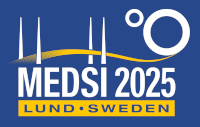Speaker
Description
During the COVID-19 pandemic, non-essential businesses closed or reduced output, prices for products rose, and availability of products needed for research decreased significantly. Many cryogenic gas producers either closed or significantly reduced production, causing the price of cryogenic gases such as liquid helium (LHe) to rise. Concurrently, much effort was focused on remote and multi-sample processing capabilities at NSLS-II, especially when non-essential staff members were not allowed on site and forced to work from home. Efforts therefore increased to develop equipment to facilitate remote and efficient research operations with minimal on-site presence. A prototype remote cryogenic transfer line valve adjuster was initially developed at this time which successfully cut LHe consumption to less than half in one week-long series of experiments, but it needed improvement. This paper describes the engineering efforts to develop, incrementally improve, and produce working remote cryogenic transfer line valve adjusters that could attach to existing standard cryogenic transfer lines.
Funding Agency
United States Department of Energy

